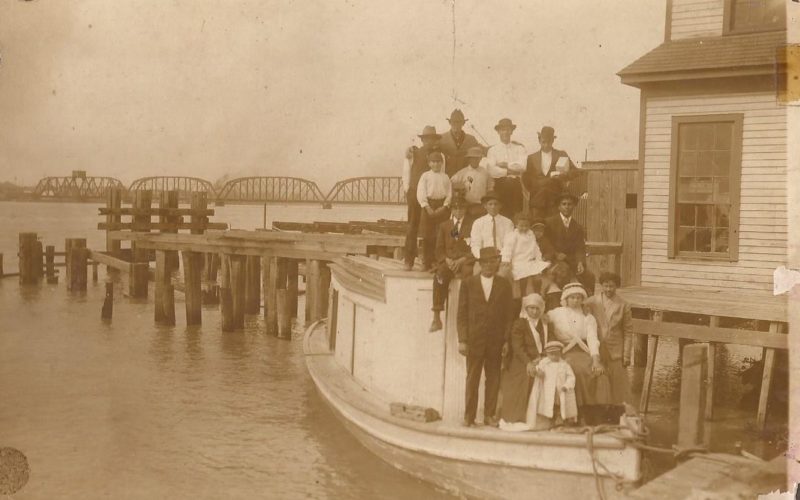
The Leco family’s boat.
I wanted to know about my dad and where his family was from; my family. It was very rarely that we saw my dad’s side of the family.
Shelbey: Who were your grandparents?
Vinnie: Pierre Leco, Alberta Leco, Earl Boudin Sr., and Gladys Guidry Boudin.
Shelbey: Do you remember them? Could you tell me about them. Where were they from?
Vinnie: Yes, I remember them. I know my mother’s parents are from Raceland, and I know they’re from Cajun French descent. I know my dad’s parents are from German and Filipino descent and they were from Dulac, south of Houma.
Shelbey: What were they like? Did they do anything in particular that you could remember?”
Vinnie: I remember making blackberry dumplings and cooking seafood-based products. I remember eating dried shrimp over there. That’s the kind of stuff they did every day. They went out south of Houma and in Grand Caillou, and caught shrimp. They would boil the little bitty ones and put’em out in the sun. They would dehydrate them. After, they put’em in a sack and make all the peelins fall off by beating the sack around. That’s what you see in them little packages at the store.
Your paternal great grandparents were out working in Manila Village. It was a reef that was built off of oyster shells. It was a farmer’s market with a general store on water with seafood. They would trawl, and trap muskrat, otter, nutria, mink, rabbits, pelts. They would go out and shuck the oysters there with the oyster boat. They’d load’em and shuck them there. Instead all the boats coming up through Lafitte, they would stay there in Manila Village and off-load their stuff. They had bigger boats that would process the stuff all right there and ship it ‘upfront.”
Shelbey: “Up the river?”
Vinnie: Up the Barataria waterway. They called it Manila Village because there were a lot of Filipinos there. I was Filipino on my dad’s side. My grandpaw was out there. You’d see’em sittin’ oon top of oyster shells. My great-grandpaw came from the Philippines and was part of the Filipino movement comin in. My grandparents were born and raised out there. That’s how they were livin. My parents were part’a that too, but they started migrating “upfront.” All you can see now of Manila Village is on your depth finder. You can see the water go from 5 feet…4…4…3…2…1. Then it’s a circle in the water and they got some pickets there that’s the only thing left. Over time, it just washed away.
Shelbey: You went there?
Vinnie: Yeah, I fished there. When I first went there, it was only a piling of oyster shells. I went in the 80’s and 90s, the piling was sticking out the water. You could still see a couple of the oyster shells.
Shelbey: Did Paw Paw go out there?”
Vinnie: Yeah, when he was little. I mean, his daddy was there. His brothers were there. He the baby of the family, but when we was five and six years old, he was out there. When he came back from school, he went out there. On the weekend, he was out there.”
I came from a family of fisherman who worked day in and day out on the oyster reef they called Manila Village.
 NOLAbeings Multimedia artist Claire Bangser created NOLAbeings as a portrait-based story project that marries...
NOLAbeings Multimedia artist Claire Bangser created NOLAbeings as a portrait-based story project that marries...  Voodoo in New Orleans: Reviving history: New Orleans fortune telling This article takes a deep dive into the history of Voodoo in New Orleans, its hybridization with Catholicism, and its present-day place in the city's culture. The author visits fortune-tellers in the French Quarter, using their guidance as a tool for introspection rather than a deterministic predictor of the future. Through her experiences in New Orleans, the author feels a mystical connection to both the past and the future.
Voodoo in New Orleans: Reviving history: New Orleans fortune telling This article takes a deep dive into the history of Voodoo in New Orleans, its hybridization with Catholicism, and its present-day place in the city's culture. The author visits fortune-tellers in the French Quarter, using their guidance as a tool for introspection rather than a deterministic predictor of the future. Through her experiences in New Orleans, the author feels a mystical connection to both the past and the future. 